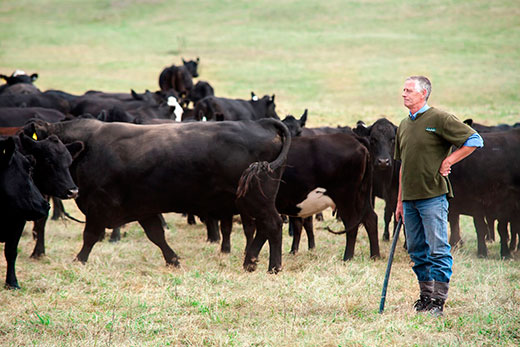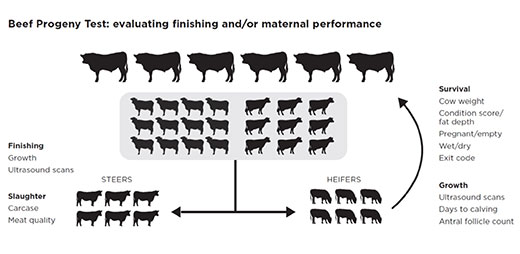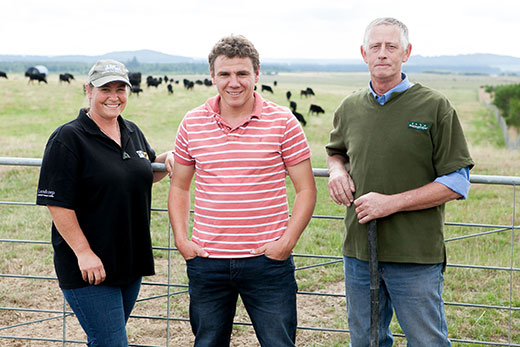Beef + Lamb New Zealand Genetics exists to help farmers make the most profitable breeding choices for their operations.
To that end, it has launched a beef progeny test, which will show how bulls of different types perform under comparable commercial conditions.

Rangitaiki livestock operations manager Emmett Thurston-Paris with a mating herd. (photo courtesy of B+LNZ Genetics)
Beef policy
Manager Sam Bunny says the property’s beef policy is pretty settled and the only significant change is a reduction in cow numbers – from more than 2000 seven years ago. The slack has been taken up by 1500 contract-grazed dairy heifers, which arrive as 100 kilograms weaners and leave 18 months later as rising two year olds.
“Overall, we run a high-cost operation, with an imbalance of high-priority stock that make more money, versus stock that can live off rubbish. The climate dictates our pasture growth curve and we need to manipulate the curve with supplements and cropping due to our winter deficit. We need high ME feed – and a lot of it – all time.”
So, when it came to cow numbers, management looked at the minimum number the property could get away with, to ensure feed quality, therefore freeing up stock units for more profitable options.
The cow’s calving date is relatively late – October 25– reflecting the reality of farming in the North Island’s Central Plateau. The 350 replacement heifers are selected based on weaning weight, with the remainder sold store. Both heifers and cows are mated to Angus bulls.
Bull selection
As a Landcorp property, bulls come from Focus Genetics. In the case of Rangitaiki, the bulls are sent from Rotamahana Station near Reporoa. Sam requests bulls that will leave cows of medium frame but with high growth. “I’m looking for a bull that bends the genetic curve a little bit. I want a low mature weight and high growth rates.”
The B+LNZ Genetics beef progeny test involves artificially inseminating 400 of the cows and all 380 heifers on Rangitaiki Station in the 2014/15 and again in the 2015/16 season.
While Sam is overseeing the project, the day-to-day logistics are being managed by the station’s Livestock operations manager Emmett Thurston-Paris and finishing cattle stock manager Tracy Gage-Brown.
Both the cows and heifers are DNA recorded before being inseminated with both internationally-sourced semen, as well as New Zealand semen. At Rangitaiki, a range of Angus bulls are being used, in line with the station’s breeding cow policy.
In addition – with the large number of cows and heifers available – some were mated to Hereford and stabiliser bulls, as alternative maternal breeds, and some cows were mated to Simmental bulls, as a terminal sire option. Using a range of breeds will provide an interesting comparison on the value of these genetics in commercial beef production.
Carcase traits
All progeny are then tracked, with their parentage verified. Steers and cull heifers will be assessed on their carcase traits, while replacement heifers will be tracked for their maternal characteristics.
“Sires costs in commercial operations are quite expensive for beef. You normally mate cows at a rate of one bull to 40 cows. If you have a 95 per cent in-calf rate and a 90 per cent calving, that might be only 30 to 35 live calves annually. Assuming a bull is used for three to four years, the sire cost per calf is quite different for a $3000 bull, compared to a $10,000 bull. I can’t wait to see how top EBVs offset that cost.
“From this test, I want to observe the value of EBVs and prove that more money spent on decent genetics pays off. Also – long term – observing whether the heifer replacements coming through make a difference.”




0 Comments
Leave a Comment